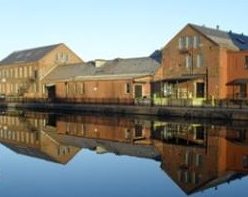Holyoke Richardsonian Train Station is bounded by Lyman, Bower, Mosher, and Canal Streets. This is an outside sidewalk tour.

Connecticut River Railroad Passenger Station was built in 1884 and finished in 1885. (The first day of use was February 1 1885.) Henry Hobson Richardson designed this station. The station is 154 feet long and 38 feet wide. The overhang of the porch is 15.5 feet. The outdoor pillars are of yellow pine. The dark brown trim in the architecture is of Longmeadow brownstone. The light masonry is of Milford granite. There is curbing around the perimeter of the grounds and this is up to 8 feet high at the maximum. It is cut from Dummerston Vermont granite.
Inside any wood finishing is of oak. The floors are pine. Any masonry trim plus the fountain is of Knoxville marble. The stairwells have oak balustrades.
As a passenger walked out of the train station toward Bowers Street they would have seen in the 1920s the Immaculate Conception Church in the distance down Ely Street. What a site that would have been! This walking tour brings you back to what life would have been like from 1885 to 1965 when this train station was active. It would have brought many immigrants into Holyoke. The station was surrounded by some very active streets.
Within the lot of the railroad station there is a Boston and Maine Railroad Express Office. It was built between 1896 to 1910 since it does not appear on the Sanborn map of 1895 but does appear on the 1911 Richards map.
stop 1 – Bowers Street
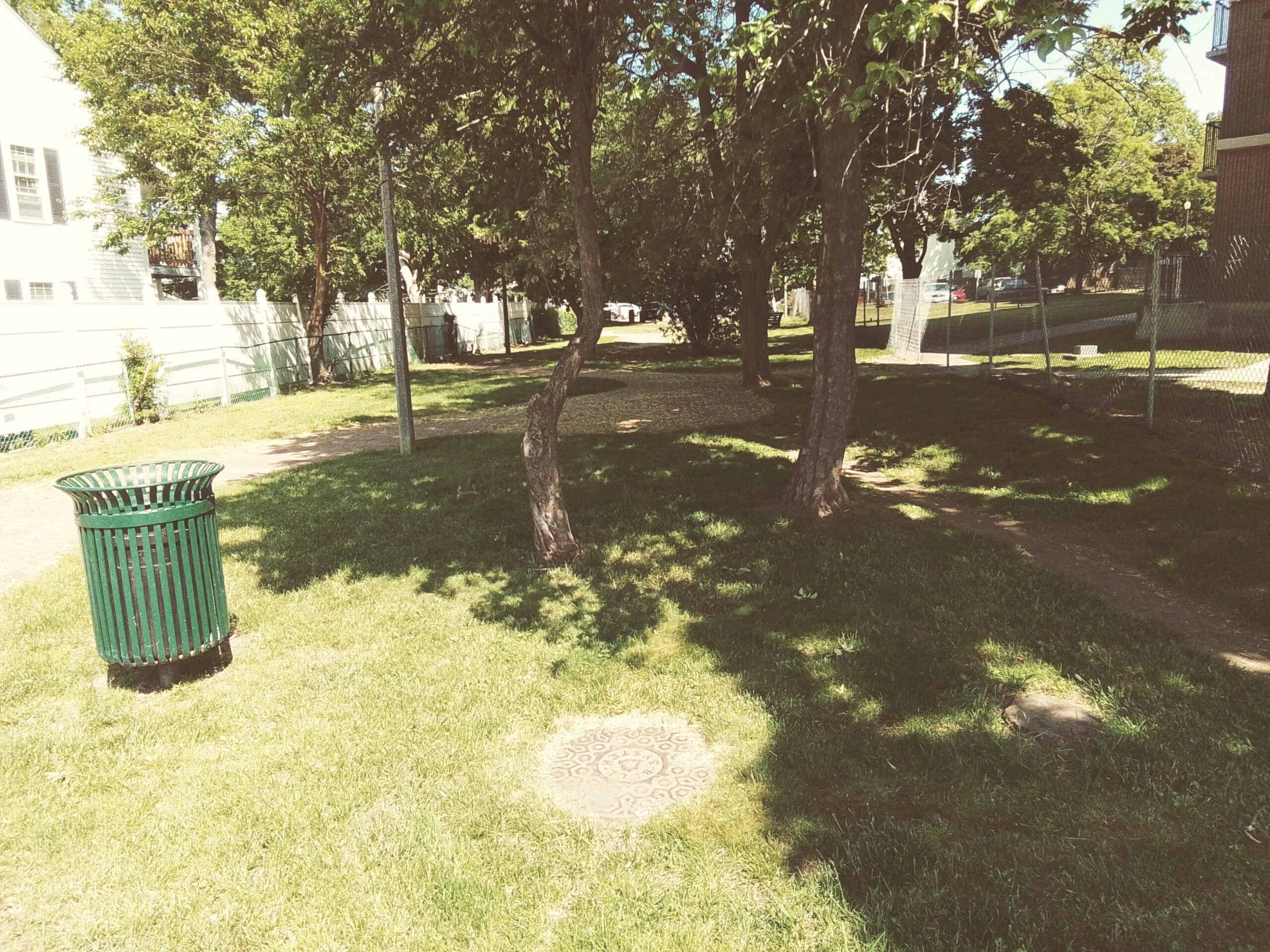
Of great interest is that the Three Star Theatre was across the street from the station. Read a little about it at the LINK. Also across Bowers Street was a line of stores and houses.
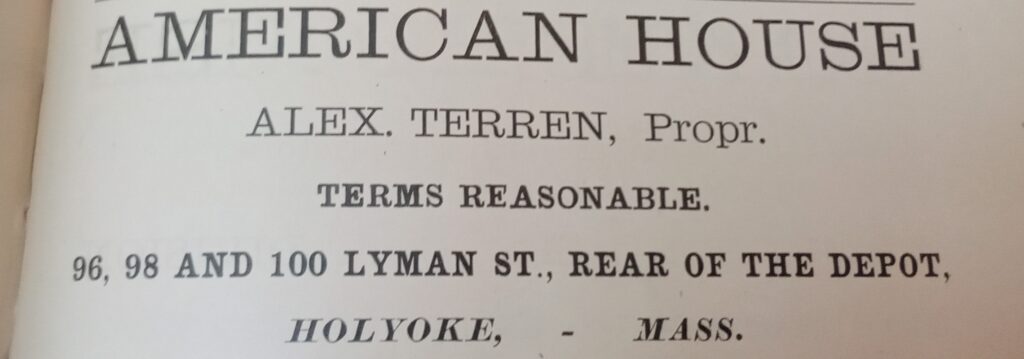
The American House was at the end of Bowers (officially at 96-98-100 Lyman Street) from at least 1887 to 1895 (in 1894 it was called the Daley Hotel). Alex Terren (Therrien) was the proprietor. The Lenox Stag Hotel was across the street for the entire block in at least the 1910s.
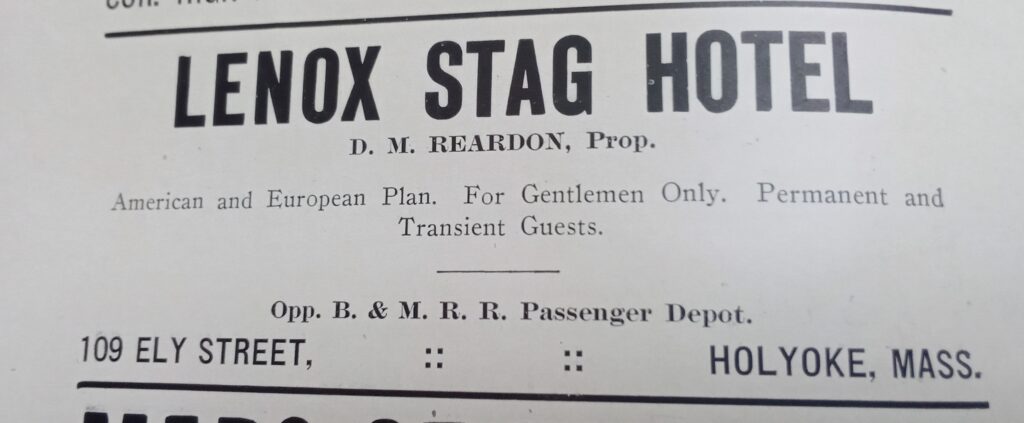
The most fascinating fact about the Bowers Street land is that when it was graded from 1868 to 1870 many Native American burials were found. Mosher and Bowers MAP.
stop 2 – Potvin Tenement Houses
Across the station alongside Lyman Street many apartment buildings were constructed. Behind these structures there was a street that is not there any more called Potvin Street and then the 2nd of three trolley barns for the Holyoke Street Railway. TROLLEY

The tenement houses across Lyman were all built in the same style and by the same owner. Gilbert Potvin (FINDAGRAVE) had the Lynch Construction Company built 13 tenement houses along Lyman here and in a row onto the adjacent streets to form a long series. All were attached to the closest one by an elevated walkway on each floor. These wooden walkways lasted from the construction in 1880 until at least 1895. (They were on three Sanborn maps but not that in 1915 – at that point windows are in their place) Each building was 4 stories high and had the same dimensions.
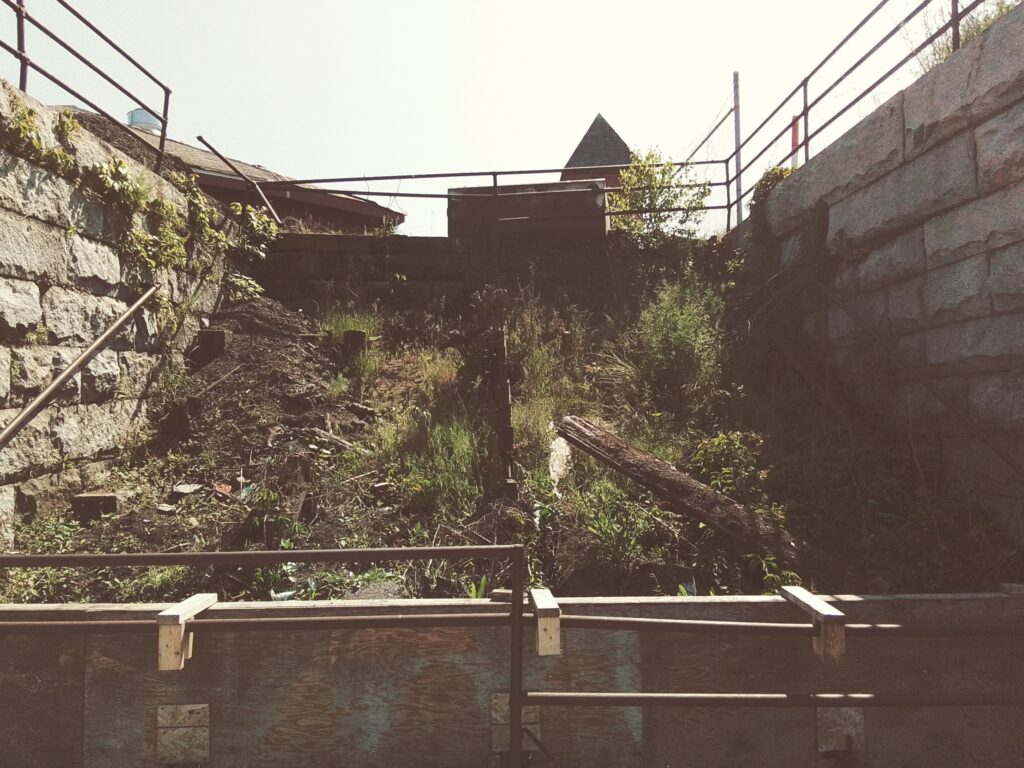
stop 3 – Connecticut River Line Railroad Bridge

You can see the Connecticut River Line Railroad Bridge built in 1927 and completed in 1928. In the distance to the northwest is the Whiting Paper Mill and the Boatlock Station.
stop 4 – Juncture of North Canal and Main Streets
Now on to Canal Street and the Second Level Canal. The Lyman Mill dominates this section of Canal Street. You can read a great deal about the Second Level Canal at this LINK.
On the eastern side of Canal Street there was in order left to right a fire station, the Holyoke Water Power Company, and the Second Baptist Church.
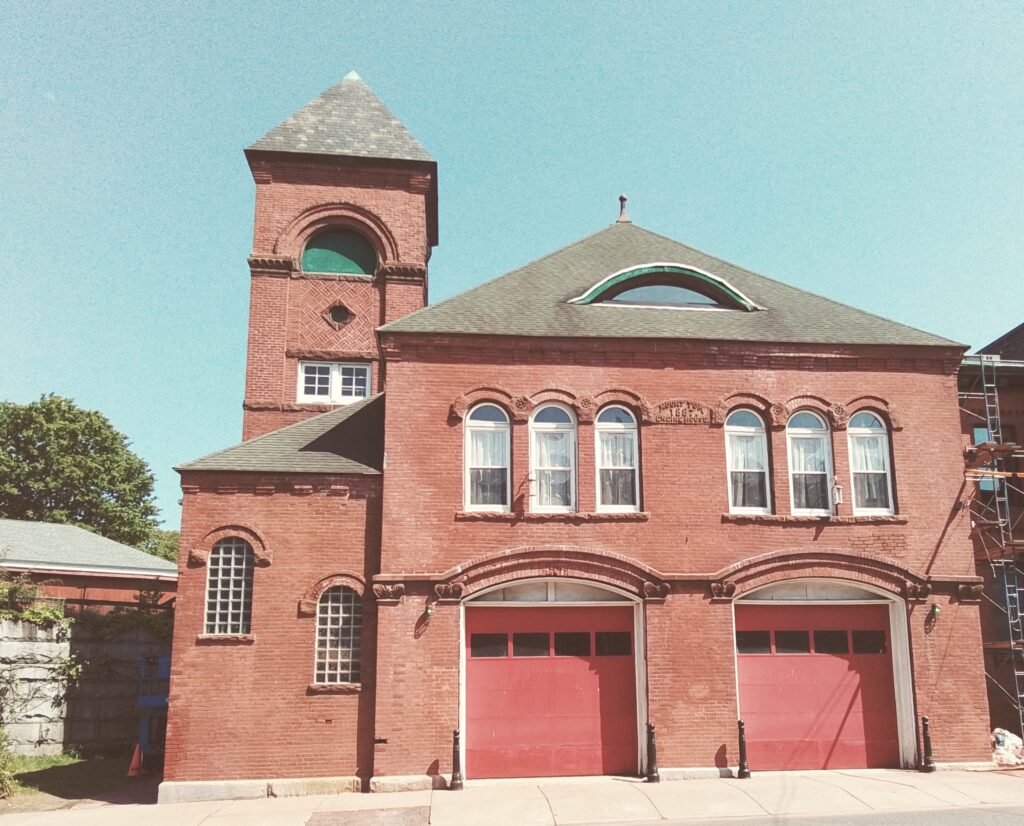
The Mount Tom Fire Station is first in this series.

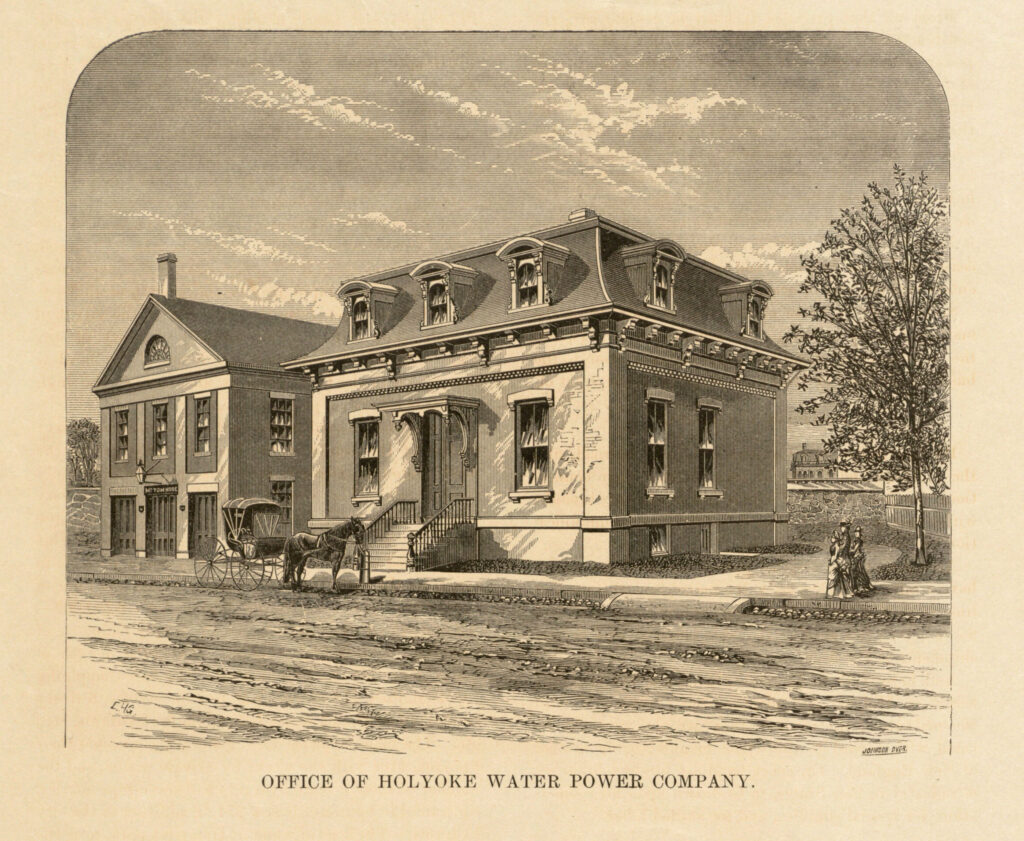
The administration building of the Holyoke Water Power Company is on this city block of Canal Street. It was built in 1871 as a Second Empire style building. In the early 1880s the French roof was raised off of the 1 story building and a second floor added. In the late 1880s a side and back addition were made.
The Second Baptist Church was built here in 1855 as a meeting house. In 1863 a fire destroyed the meeting house. In the new church, exterior was clad in brick and the steeple was 50 feet high. It was dedicated April 20 1865. Another Second Baptist Church was built on Appleton Street. The cornerstone was laid August 9 1884 and the church was dedicated October 20 1885. This Second Baptist Church at the juncture of Main and Canal was to remain part of the church system as a mission church.
The parish of the Holy Rosary Church met at the Second Baptist Church during 1886 and 1887. The Rosary Church was built on Mosher Street in 1888. The life of the Second Baptist Church at Main and Canal since by 1895 it had been removed. The church was removed in the 1880s or 1890s so that a building that faced onto Mosher Street could be expanded.
stop 5 – Hotel Monat
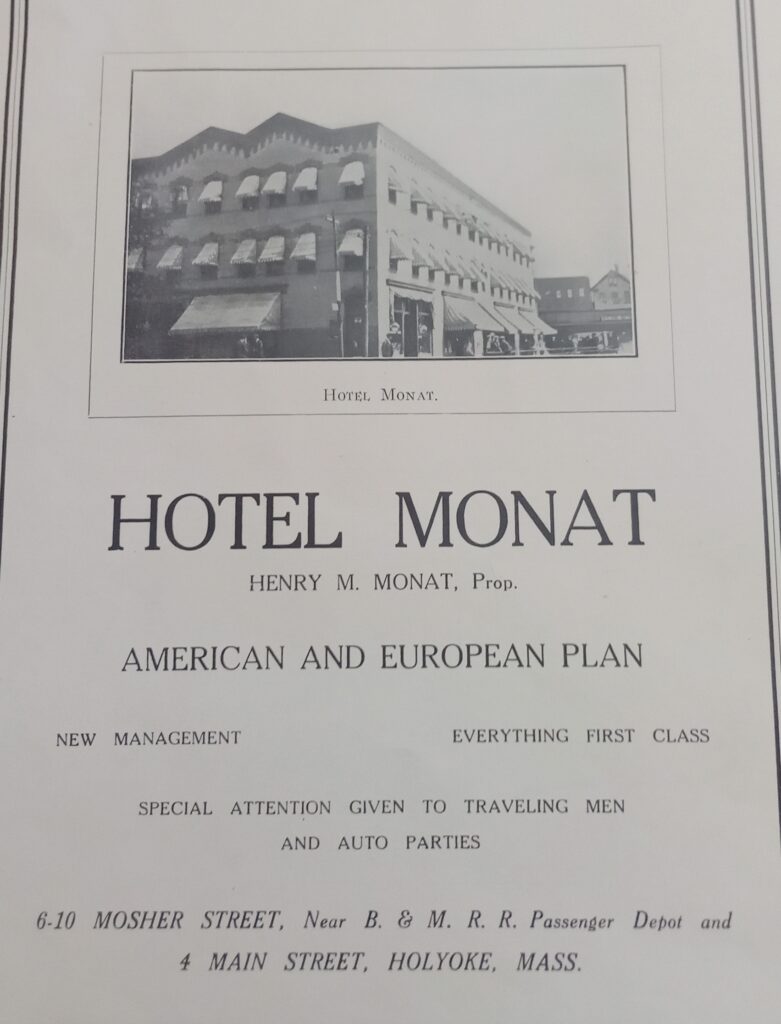
This building on Mosher Street was built in 1884. It was three floors high and had stores on the ground floor (fruit, barber, and a bar) and a chemical company on the second floor. By 1895 it now had a hotel on the upper stories and was called the Norris House. The Hotel Monat came into this building and expanded it backwards. By 1949 the Hotel Monat had two restaurants – 4 Main and 2 Mosher. The establishment was owned by Henry Monat.
Across the street from the Monat was the Robert Russell building. This area would become an auto repair shop in the 1910s with wood buildings and then masonry buildings. At the southwest corner of Mosher and Bower Streets, there was a railroad turntable.
Sanborn maps
1895 map A – map B – map C
1915 map A – map B – map C
1949 map A – map B – map C
1956 map A – map B – map C
